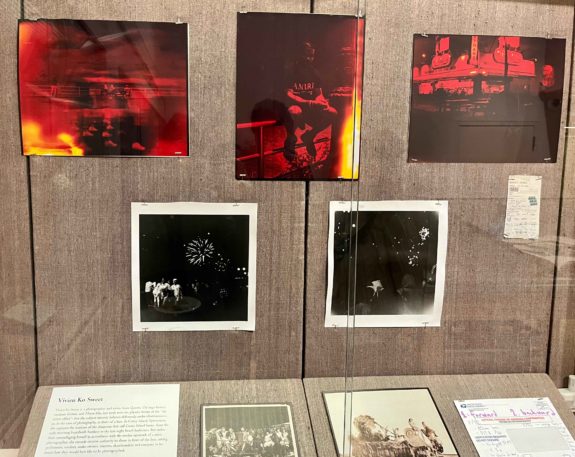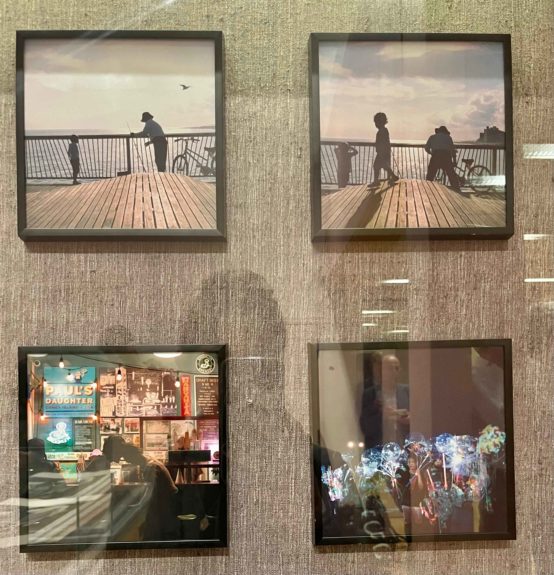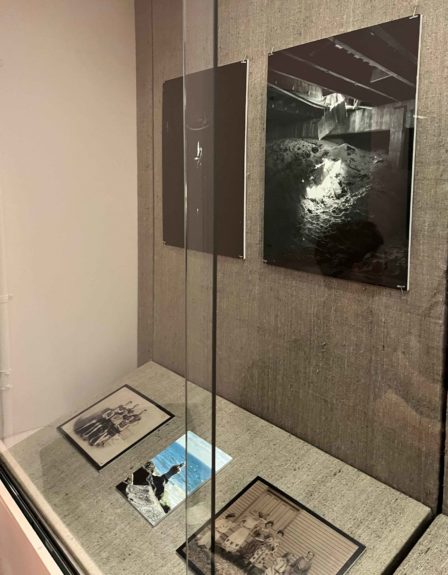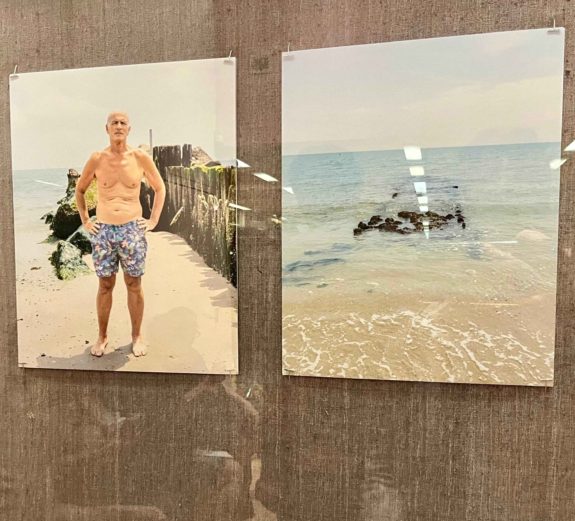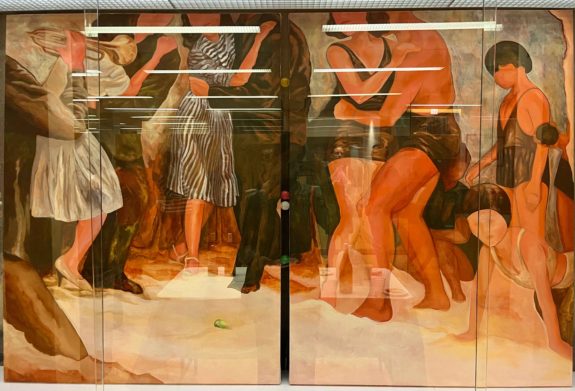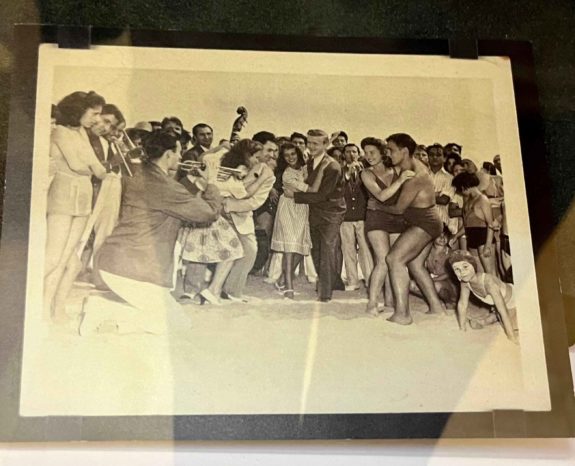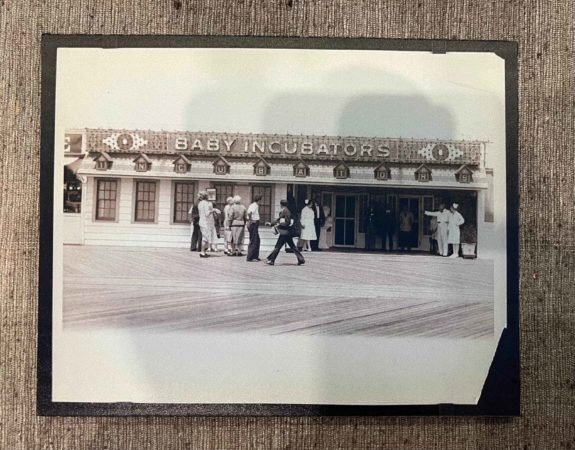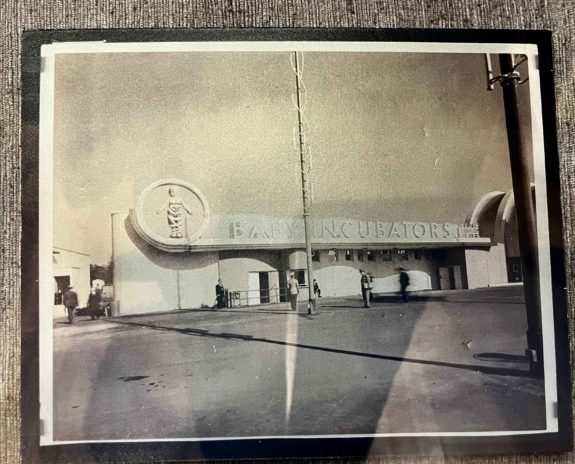On September 26, Staff Writer Lorelei Gorton attended the “Coney Island, Spectacular” exhibition in Butler’s Rare Book and Manuscript Library.
“Are these swimming pictures?” the woman next to me mumbled to her companion. “Are they wearing swimming dresses, or just summer dresses?”
Everyone has a mental image of Coney Island. That’s the assumption, at least, that Melina Moe, Curator of Literature at the Rare Book and Manuscript Library (RBML), was working off of when designing the library’s new “Coney Island, Spectacular” display. The exposition juxtaposes photographs taken from the RBML archives with new artworks from Javier Griffey (MFA ‘25), Sharon Lee (MFA ‘25), and Vivien Ko Sweet (CC ‘25), all of which were centered around the theme of Coney Island. This is the first collaboration between the RBML and a Columbia art department, and it was brought about largely thanks to Moe’s efforts. She said she was inspired by the idea of creating “new art out of underutilized archival material,” and chose Coney Island as the theme because of its iconic, world-wide cultural status. I understood the sentiment. Even before I landed in New York for the first time last month, Coney Island existed in my mind in a swirl of Ferris wheels, hotdogs, and Taylor Swift’s “coney island.” The area has generated a huge amount of artistic inspiration (so much so that Wikipedia has a whole page dedicated to “Coney Island in popular culture”), adding to Moe’s interest in involving student artists in the exhibition. And conveniently, RBLM houses the Frederick Fried Coney Island collection, a vast series of photos that range from 1847 to 2001, so there was plenty of historical material to draw on.
In her reception speech, Moe mentioned the vast contradictions that Coney Island encompasses. It’s a symbol of escape, leisure, and fun, but also of seediness and “a degree of bad taste.” Many of the photos were, in fact, the “swimming pictures” the woman next to me was looking for, or classic depictions of summer carnivals. But Vivien Ko Sweet’s photography brought to light a different aspect of the island. Her nighttime photographs, dominated by dark black or red backgrounds that form a sharp contrast to the sepia monotone of the archival shots, accentuate the brilliance of the fairground lights and lend a shadowy, blurry mystery to the figures and space depicted. When describing Sweet’s work, Moe mentioned its tactile quality, as well as the artist’s dedication to capturing the everyday. This was visible in the material on display, which includes notes for the photographic process scribbled on small memo sheets and envelopes, and in its subjects, generally people carrying out their private lives.
Javier Griffey’s work had a similar emphasis on portraiture, which Moe spoke of in her introduction as exploring “what it means to present yourself on the Coney Island Boardwalk.” He approaches his art form with a mindset not unlike that of an archivist, “collecting stories” from his subjects. Griffey’s photography is bold, varying so sharply in tone, style, and subject that at first glance, I wouldn’t have thought they were taken at the same site. His dramatic black-and-white stills resonate with solemn, theatrical beauty, while his color photographs seem to bubble with vibrancy and character, capturing the duality of the island’s extremes.
While all three artists work in photography, Sharon Lee was the only one to exhibit a painting at this event. Inspired by a specific photo from RBLM’s archives, Lee decided to recreate it on canvas with a few tweaks. She altered the composition, placing the focus much lower so that the soft gold of the sand and the green glimmer of the bottle buried within it become what’s emphasized, while the crowd of faceless bodies merge in a maze of suntanned-limbs. The exception is a single figure on hands and knees, who stares straight out at the audience with only a few shaded areas to hint at facial features. The effect is bustling, warm, and a little uncanny: a masterful depiction of contradictions.
At the door were postcards featuring the artists’ work, a fun souvenir that also recalled Coney Island’s touristic culture. On my way out, I asked Moe if this kind of collaboration would continue–could there be new themes, new art on display? She was excited about the possibility for future exhibits, mentioning RBML’s rich collection of archival 20th century street photos of the Lower East Side. But for now, the Coney Island, Spectacular exhibit will be up for the rest of the semester in the Kempner Gallery of the Rare Book and Manuscript Library in Butler, and I highly encourage everyone to visit.
Event photos via Lorelei Gorton


 0 Comments
0 Comments